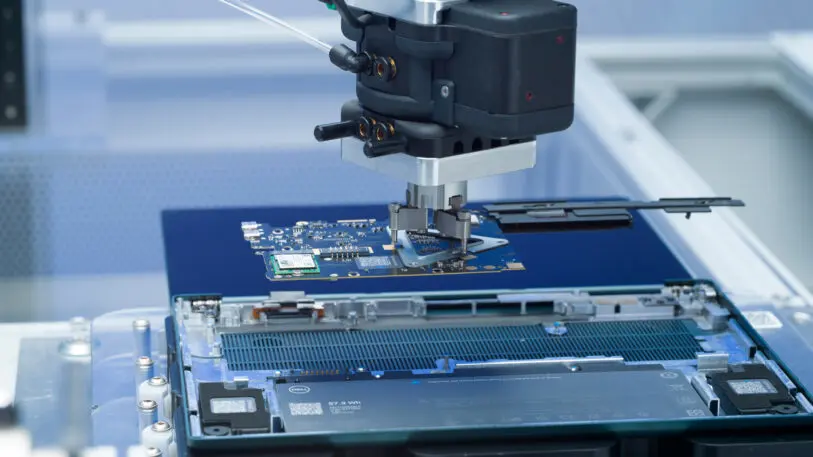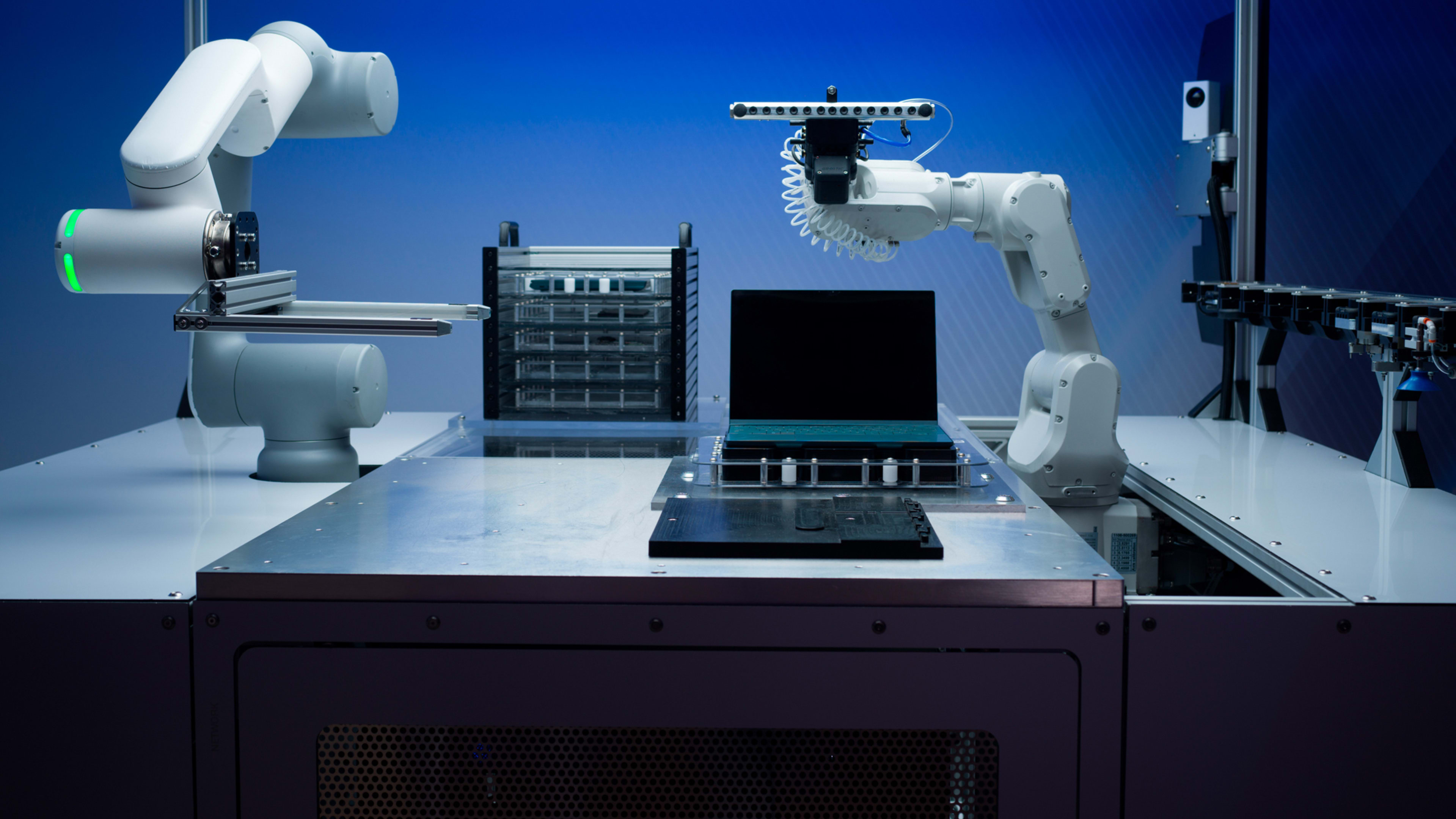If you want to take apart a laptop, you usually start by flipping the device over and taking out multiple tiny screws. But to disassemble the Concept Luna, a prototype laptop from Dell, all you have to do is fit a key into the side of the device and pop out a bar at the top of the keyboard. From there, like a cascading puzzle, you can take out the entire keyboard, speakers, battery, and fan. Even the LCD screen easily slides out, leaving the empty aluminum shell. When Trevor Morrison, an engineer and system architect at Dell, demonstrated the process, it took about 45 seconds—no tools required, and no screws, cables, or glue to bypass.
Disassembling a laptop can be complicated: Not only are there dozens of screws, there are often delicate cables that connect components, and sometimes pieces are glued or soldered to each other. Repairing or recycling those parts can be even more difficult; if a battery is glued to a plastic casing, it may be too much work for a recycler, who only wants the valuable aluminum inside.
The new prototype laptop from Dell, an update to its Concept Luna released last year, removes those barriers, showing how laptops and other electronics can be designed to easily break down for reuse or repair. In a blog post published Thursday morning, Dell asked consumers to “imagine a future where we don’t simply discard used electronics.” Instead, the components are reused until they’re “truly at the end of life,” and then purposed into new devices. Dell has a goal that by 2030, for every product a customer buys, it will reuse or recycle an equivalent product. Concept Luna aims to show how that might be possible.
The quick disassembly isn’t Dell’s only innovation. The company also created a “microfactory” in which a robot arm follows the same steps to take the device apart, while also scanning each component to assess its health. Using intelligent telemetry—a technology that automatically measures and transmits performance data from different products—the microfactory scans the components of the laptop as it removes them, analyzing the keyboard, for example, for any cosmetic issues.
In 2021, the world disposed of 57.4 million tonnes of electronic waste—outweighing the Great Wall of China. Not only does that waste physically pile up, it means the valuable resources inside, like gold, copper, and aluminum, fail to be recycled, requiring more mining for new materials, which creates new emissions.

Though there’s no current plans to bring Concept Luna to market, it allows Dell to test different sustainability ideas and implement individual Concept Luna features into its products as they’re ready. “Parts of how we created Luna could cascade into products sooner, while we’re working through bigger implications,” says Page Motes, head of global sustainability at Dell. “We don’t want perfection to be the enemy of done.”
At the core of this innovation is a change to how Dell approaches design. “Our history is to design for assembly, to design for manufacturing,” Morrison says of mechanical designers at large. “What we haven’t really seen in the industry is design for disassembly, design, or harvest.” When he looked at a laptop through that lens, he realized that maybe this plastic doesn’t need to be bonded to that component, for instance, or that those screws aren’t necessary to open up a device.
Dell is careful that optimizing a design for circularity doesn’t affect performance: After customer feedback on its original Concept Luna, designers re-added an internal fan. In the future, when more information is cloud-based, a passive cooling system may make more sense, but Dell wanted to show it can still have the same fan performance in a sustainable design today.
This new version of Concept Luna doesn’t require any screws for disassembly, making it even easier to break down. “Most common notebooks require over an hour to fully take down to harvest,” Morrison says. “The Luna last year took minutes; this year, we’re down to seconds.” While the original Concept Luna may have shown the breakthrough of the laptop’s design, this year, Dell is telling a bigger story about how that design can connect to a circular economy. With the microfactory that uses intelligent telemetry, Dell can diagnose the health of its laptop components, ensuring that less is wasted.
This is especially notable because different pieces of a laptop may wear down at different rates. Your motherboard may need to be replaced, but if you use a wireless keyboard, it might still be able to have a second life; similarly, a laptop’s speakers, which are made up of rare earth magnets, typically last longer than other components and can often be reused.
Concept Luna is just one way Dell is exploring how to be more sustainable. The company has also made advancements in material sourcing for current products, using ocean-bound plastics, bio-based rubber from castor beans, and recyclable packaging made from 100% recycled or renewable materials. If there’s a question of whether a company should be focused on pursuing lofty innovation, like the Concept Luna, or implementing the changes it can make now, “the answer is it’s got to be both,” Motes says. “That’s exactly what we’re trying to do.”
Recognize your brand’s excellence by applying to this year’s Brands That Matter Awards before the early-rate deadline, May 3.
